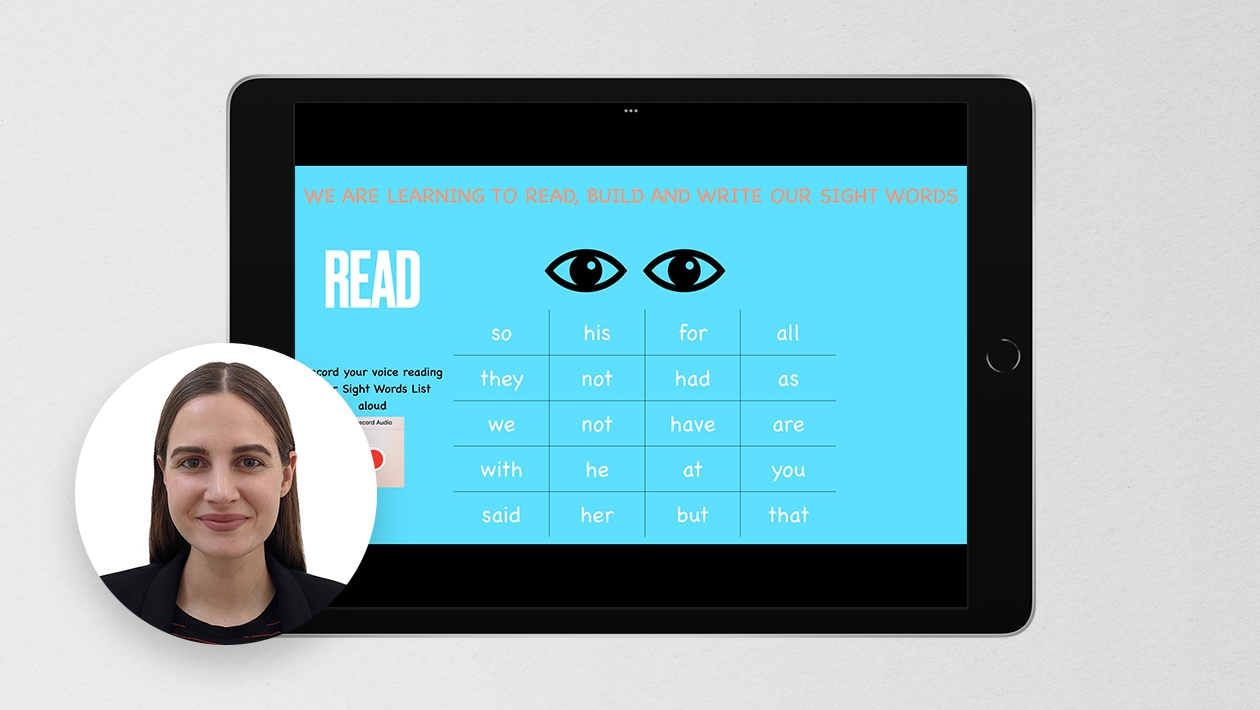Teaching the Science of Reading to early learners is crucial for laying a strong foundation in literacy. The Science of Reading emphasizes evidence-based practices rooted in research on how children learn to read. It focuses on understanding the structure of the English language, including phonology, phonics, fluency, vocabulary, and comprehension. Warm-up activities like substituting sounds, Clap Snap Tap (phoneme segmentation), Sight Words Randomizer, and Crack the Code (decoding CVC words) play a significant role in early literacy development. These are some quick and engaging Science of Reading warm-up activities I created in Keynote. My students complete them in a whole group setting and produce answers using various writing tools such as sand trays, whiteboards with markers, pencil and paper, or on their iPad. Here is a quick description of how each activity works in my classroom:
Substituting Sounds: This activity helps children understand that changing one sound in a word can create a new word. It enhances their phonemic awareness and promotes flexibility in manipulating sounds within words. In this activity students listen to the audio dictating which sound to change in the beginning of a word. Students write the new word, read it aloud, then self assess their work with magical Keynote animations.
Clap Snap Tap Phoneme Segmentation: Breaking down words into individual phonemes helps children develop a strong understanding of the sound structure of words. This skill is crucial for decoding and spelling. In this activity students are guided in acting out the sounds in a word by the movements of the emoji pictures on each slide. Clap the beginning sound, snap the middle sound, and tap your foot for the ending sound then jump and say the whole word!
Sight Word Randomizer: Sight words are frequently used in texts, and memorizing them helps children read more fluently. Warm-up activities that involve recognizing and recalling sight words contribute to building a sight word vocabulary. In this activity the teacher will display the sight word randomizer and ask a student to say "Stop". She/he will then stop the Keynote GIF and students will write and read the sight word aloud. Watch as students are excited and engaged to see which word we will stop on next.
Crack the Code Decoding CVC Words: Practicing the decoding of CVC words helps children gain confidence in applying phonics rules and sounding out words. It's a foundational skill for early reading. This activity was inspired by the amazing Mr. Greg Kindergarten Smorgasboard. In his instagram post he shared how to complete this activity with anchor charts and different colored sticky notes, so I tried it in a digital format. Students are prompted with different color squares and letters to write, and read aloud a real or nonsense CVC word. With a hammer emoji picture and Keynote movements the squares begin to crumble, the word answer appears and students self assess their work.









January 26, 2024 . English
English
Thanks Katie for sharing these. Your Keynotes are so fun! Engaging way for students to learn language!
This action is unavailable while under moderation.
This action is unavailable while under moderation.